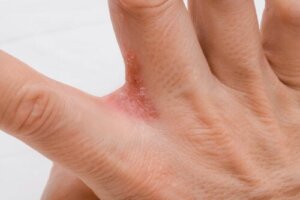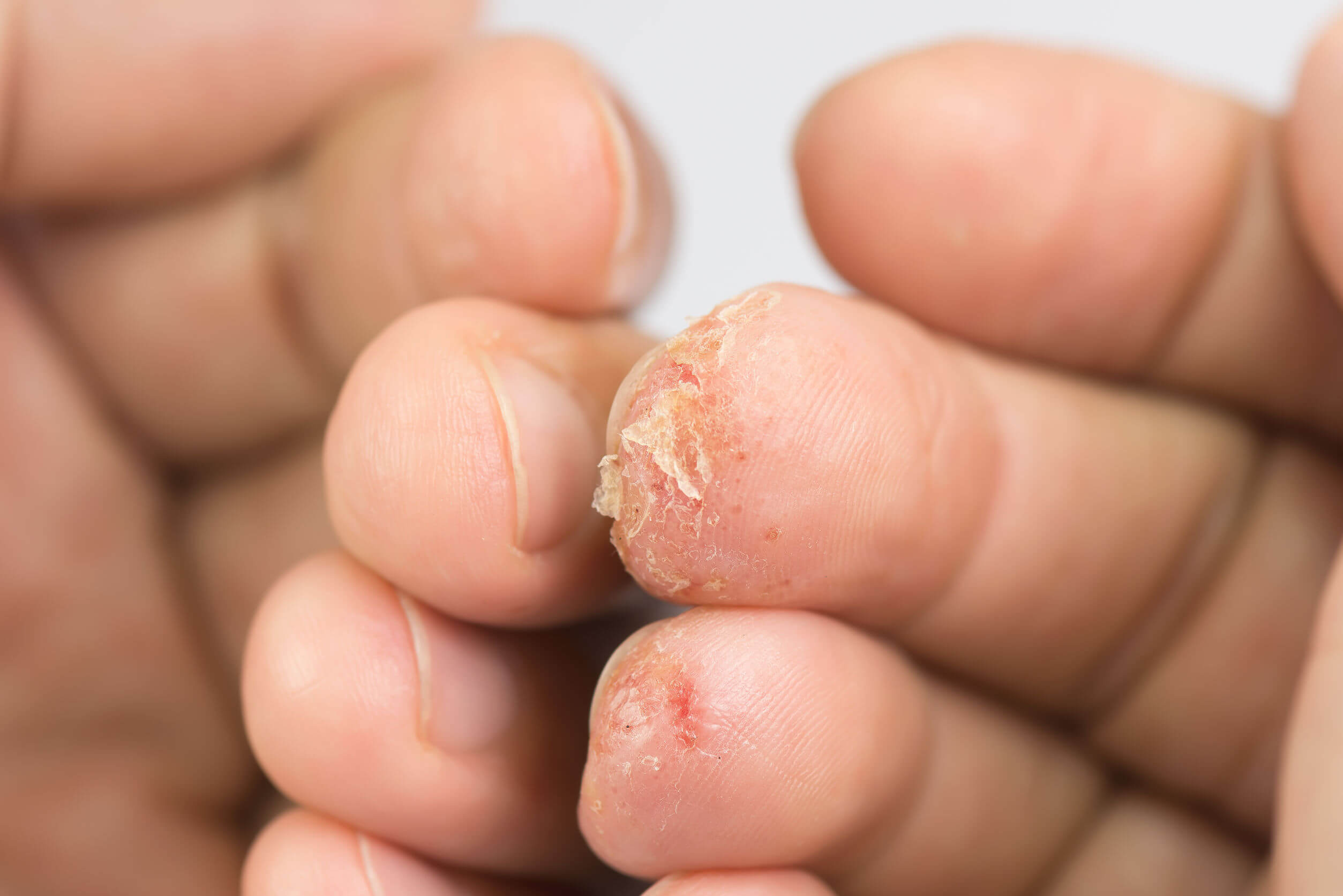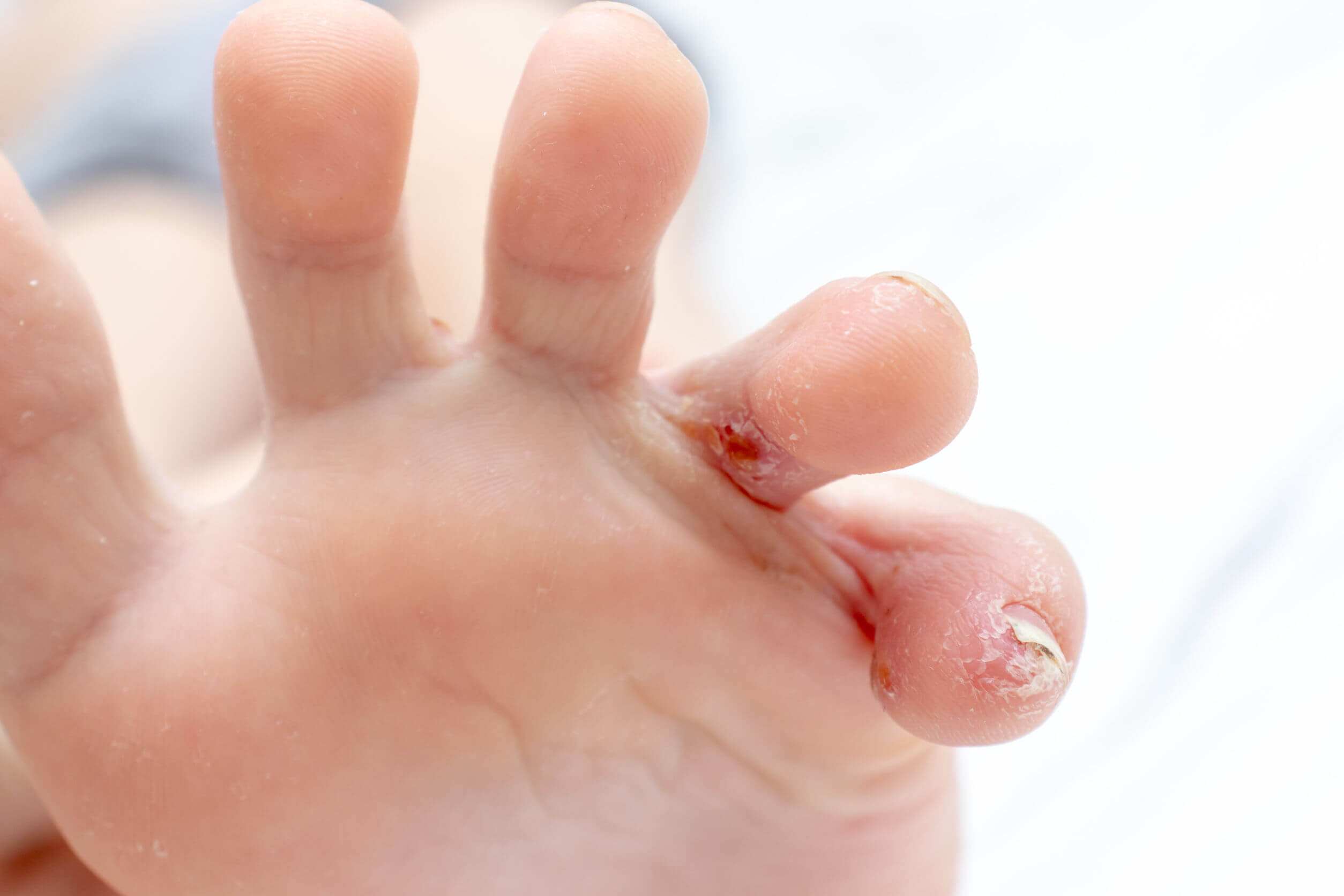Dyshidrosis in Kids: Symptoms and Causes


Written and verified by the dermatologist Maria del Carmen Hernandez
Dyshidrosis in kids isn’t a common condition. Although it’s an ailment that resolves spontaneously, it should be addressed quickly so as not to hinder the quality of life of the child and generate complications in the future.
It’s characterized by a chronic and recurrent pattern that starts with pruritic vesicles until it reaches a stage of desquamation.
Why is palmoplantar dyshidrosis triggered?
Some published studies refer that the main cause of this pathological condition is the obstruction of the sweat duct.
However, other publications discard the association between sweat glands and this type of dermatosis. There are several causes that could be considered causative agents in order to address a specific and more effective treatment. Some of them are the following:
- Fungal infections
- Autosensitization dermatitis
- Hyperhidrosis
- Reaction to drugs
- Contact allergy (irritant or allergic)
- Atopic skin

However, the origin of this skin manifestation is uncertain and is largely attributed to stress, allergic predisposition, and atopic dermatitis.
It occurs not only in children but also in adults and most frequently in young adults between 20 and 40 years of age. However, in dyshidrosis in kids, pruritus causes discomfort that makes daily activity and sleep impossible and alters the quality of life.
Read also: Allergies to Sweat in Children: Symptoms and Treatment
The symptoms of dyshidrosis in kids
Dyshidrosis is characterized by an eruption of non-erythematous, symmetrical blisters or vesicles along the sides of the fingers in plantar or palmar areas. Small vesicles may even coalesce and form blisters.
In severe cases, the blisters may rupture and drain, the skin becomes dry, cracked, and painful. The hands and both feet are symmetrically involved. Therefore, the lesions have the following characteristics:
- Flat
- Pruritic
- Round
- Pink or red
- They can evolve into even larger lesions
The Spanish Academy of Dermatology and Venereology points out that it resolves spontaneously within 2 to 3 weeks after the onset of the outbreak. This is why dyshidrosis doesn’t usually progress to more serious conditions or complications.
This is why, in most cases, dyshidrosis doesn’t tend to progress to more serious conditions or complications, only discomfort or pustules with mild erythema on the skin surface, as a result of a secondary infection.
The severity of dyshidrotic eczema
Dyshidrosis in kids is a benign and self-limited skin surface manifestation. However, the severity it may involve is diagnosed with the child’s symptomatology and with the intensity of the vesicles that appear.
- Mild to moderate dyshidrosis: This type of severity doesn’t affect the entire skin surface of the soles of the feet and palms of the hands. In addition, only a small number of vesicles appear, which may be grouped or scattered, with no evidence of redness in the area. The child isn’t bothered by it and doesn’t complain of itching, pain, or burning.
- Severe dyshidrosis: The picture is much more florid and affects the entire palmar or plantar surface. In turn, the itching suffered by the child is very intense and leads to constant and strong scratching, which produces fissures in the skin that are susceptible to secondary infections. Also, the vesicles tend to be large, together with blisters, which incapacitate the child from continuing with their usual activity (walking or using their hands to perform tasks).
Sleep may be disturbed in children with intense pruritus. Bacterial superinfection of the lesions is a frequent finding. Contact with detergents, solvents, or water can aggravate the clinical picture.
You may be interested in: Juvenile Plantar Dermatitis: What You Should Know
Differential diagnosis
Both a clinician and a dermatologist can make the diagnosis of dyshidrosis according to the visual examination of the lesions and their location.
However, a differential diagnosis between different diseases should be considered, as this type of skin manifestation is shared by other diseases.

- Contact dermatitis (irritative or allergic)
- Dermatophytosis
- Palmoplantar psoriasis
- Juvenile palmoplantar dermatosis
- Palmar hyperkeratotic dermatitis
- Atopic dermatitis
To confirm the diagnosis, a patch test or skin biopsy can be used. However, this is uncommon.
Final considerations of dyshidrosis in kids
Dyshidrosis in kids is also known as dyshidrotic eczema. It’s a chronic, inflammatory disease that’s usually not serious. In addition, it’s not contagious and it can appear with moments of outbreaks and remission.
At any sign or symptom, it’s best to go to a specialist doctor to make the correct diagnosis and indicate the specific measures to follow. According to the clinical manifestations at the time of the visual examination, the physician will indicate topical treatments or more advanced measures.
All cited sources were thoroughly reviewed by our team to ensure their quality, reliability, currency, and validity. The bibliography of this article was considered reliable and of academic or scientific accuracy.
- Ale, I., & Maibach, H. I. (2013). Topical Treatment of Hand Eczema: Corticosteroids. Springer eBooks, 321-328. https://link.springer.com/chapter/10.1007/978-3-642-39546-8_30.
- Doyle, C., & Eustace, K. (2022). Pompholyx as a side effect of intravenous immunoglobulin (IVIg). BMJ Case Reports, 15(3), e248772. https://pubmed.ncbi.nlm.nih.gov/35354565.
- García, X., Corella, F., Roé, E., Dalmau, J., & Puig, L. (2006). Dishidrosis. Farmacia Profesional, 20(4), 70-73. https://www.elsevier.es/es-revista-farmacia-profesional-3-articulo-dishidrosis-13087206
- Ikumi, K., Kio, T., Torii, K., Masuda, H., & Morita, A. (2020). Successful treatment of dyshidrotic palmoplantar eczema with ultraviolet A1 light‐emitting diodes. The Journal of Dermatology, 47(8), 922-923. https://www.ncbi.nlm.nih.gov/pmc/articles/PMC7497185/.
- Nishizawa, A. (2016). Dyshidrotic Eczema and Its Relationship to Metal Allergy. Current problems in dermatology, 80-85. https://pubmed.ncbi.nlm.nih.gov/27584966.
- Schnopp, C., Remling, R., Möhrenschlager, M., Weigl, L., Ring, J., & Abeck, D. (2001b). Topical tacrolimus (FK506) and mometasone furoate in treatment of dyshidrotic palmar eczema: A randomized, observer-blinded trial. Journal of The American Academy of Dermatology, 46(1), 73-77. https://pubmed.ncbi.nlm.nih.gov/11756949/.
This text is provided for informational purposes only and does not replace consultation with a professional. If in doubt, consult your specialist.








